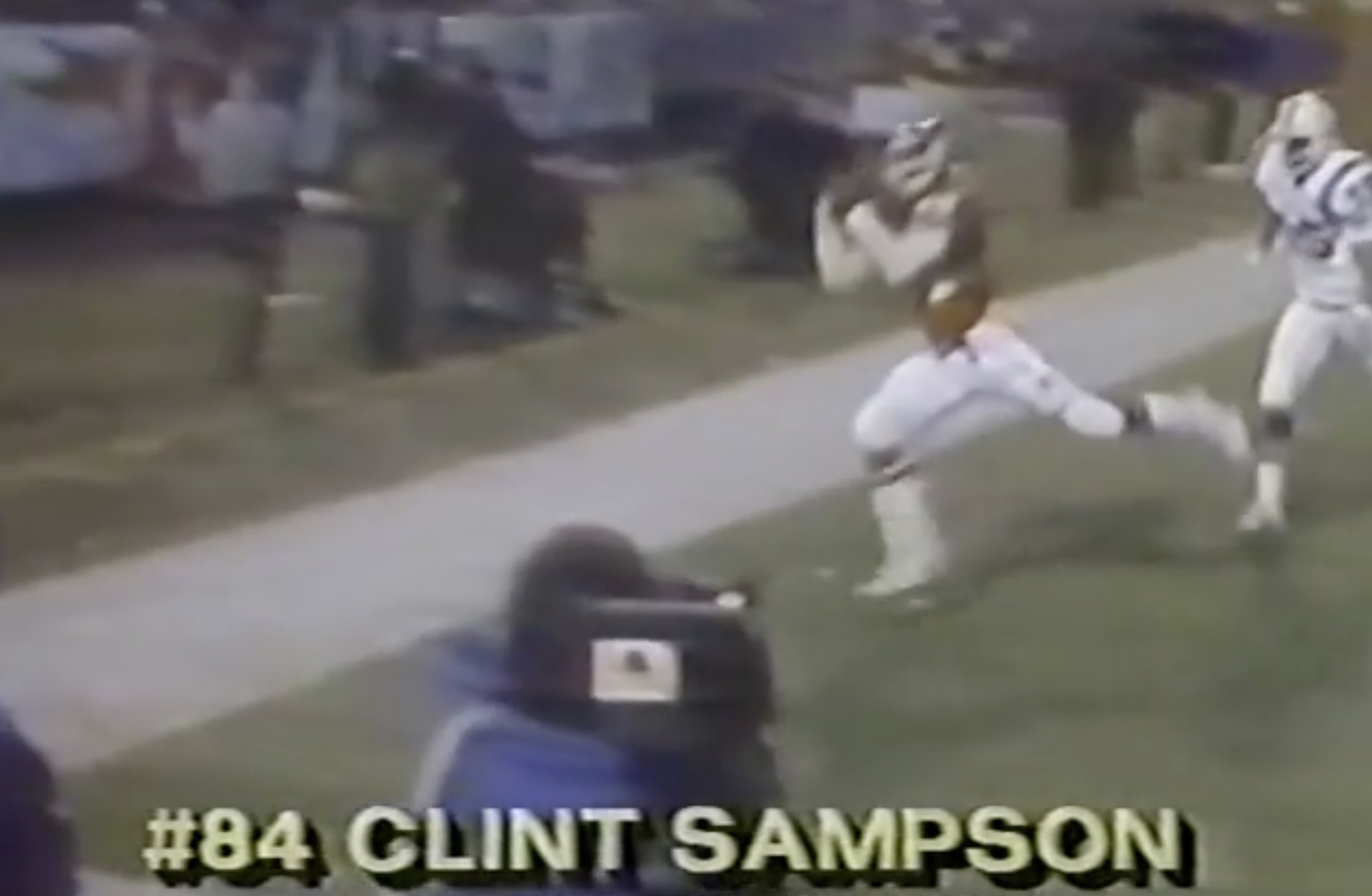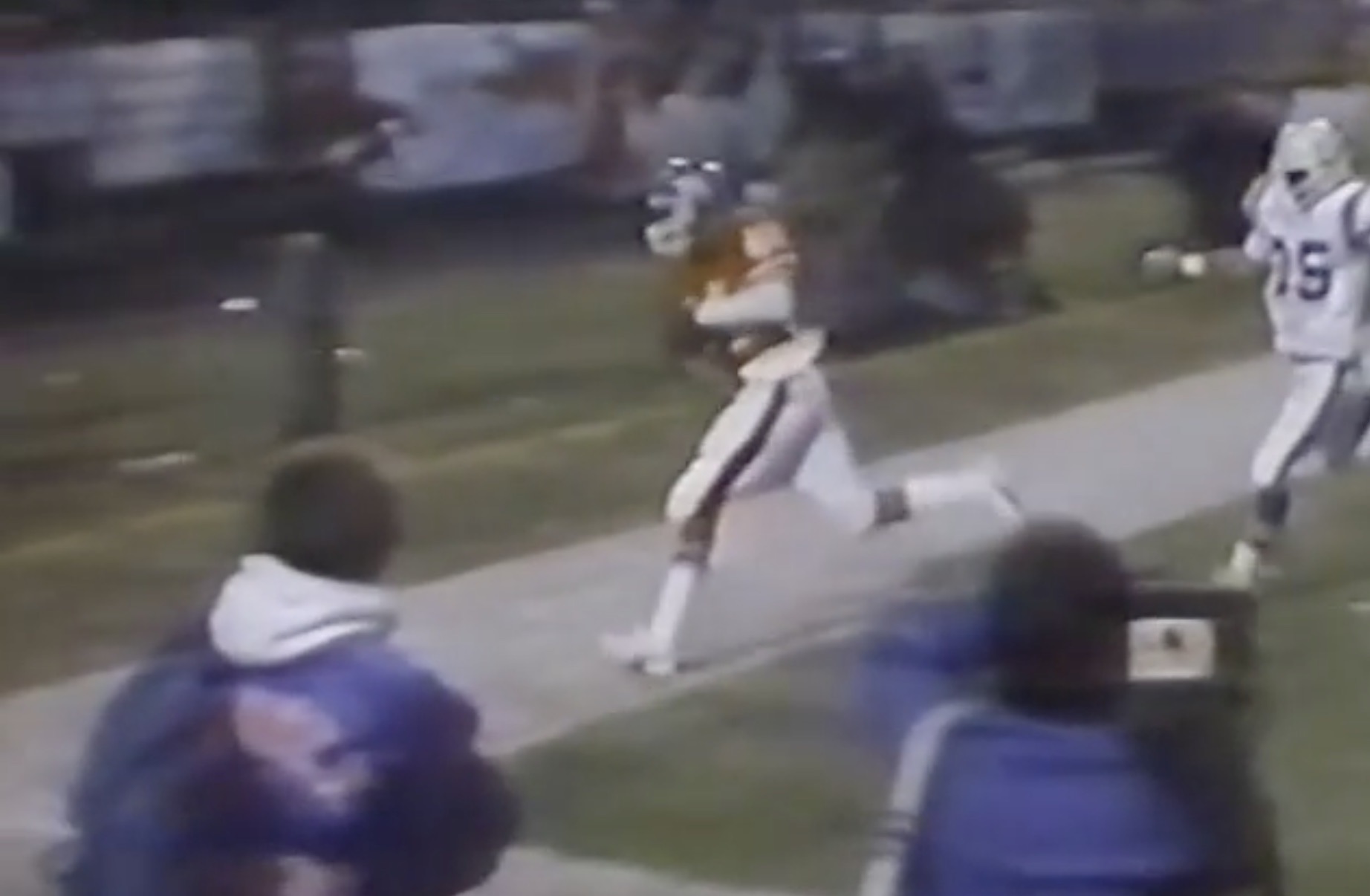© 2025 ALLCITY Network Inc.
All rights reserved.

As morning turned to afternoon on December 11, 1983, the Broncos awoke with the chance to clinch their first playoff spot in four years. Fans tailgated in the Mile High Stadium parking lot, preparing to give linebacker Randy Gradishar a warm send-off for the final home game of his brilliant, Hall-of-Fame-worthy career.
When night fell a few hours later, both of those circumstances, flooded with significance, were afterthoughts.
The Broncos did seal a postseason appearance by defeating the Baltimore Colts, 21-19. That ended a three-year absence, something which the Broncos would not have to endure again for over 20 years.
Gradishar did give the fans something to remember. In the fourth quarter, he joined with Tom Jackson to provide pressure that forced Colts quarterback Mike Pagel into an errant throw down the right sideline on third-and-7 that Louis Wright intercepted. He also dropped into coverage to break up a third-down pass and force a Colts punt, demonstrating the versatility that remains rare and elusive among inside linebackers.
But this day wasn’t about the end — not the end of a streak of playoff absences, not the end of one of the most brilliant careers in Broncos history.
It was the dawn of John Elway.
Yes, Elway had been a Bronco for just over seven months by this time. But in the previous 14 games, he had just four touchdown passes against 10 interceptions, had thrown for more than 200 yards just once and had been benched twice — first at halftime of the season opener, and then midway through a 31-14 loss at Chicago in Week 5.
Seven days earlier, Elway had played his best game to that point — a 23-of-44, 284-yard, two-touchdown, one-interception effort in a 27-6 win over Cleveland.
But when you think of Elway, you don’t think of the comfortable wins.
You think of the comebacks. The games where fans squirmed for three and a half uneasy quarters and then squealed with delight in the final moments when his howitzer right arm, powerful legs and indomitable will pulled the Broncos back from the brink of disaster to thrilling success.
This game, against the team that drafted him, the team led by the coach, Frank Kush, that neither Elway nor his father wanted him to play for … this was his first pro comeback.
It was not merely something new for Elway as a pro, but for the Broncos themselves: They had never won a game like this before.
Consider this: In the Broncos’ first 40 seasons, they trailed by at least 17 points after three quarters 74 times. The first time this happened, on Nov. 27, 1960, Frank Tripucka led them back to a tie after trailing 38-21 through three quarters. (Denver actually trailed 38-7, but it doesn’t count as the biggest comeback because the Broncos finished with a tie, not a win.) Then the Broncos lost the next 53 games with such a deficit heading into the fourth quarter.
Until Elway led them back.
The Broncos once had a bigger comeback — from down 34-10 against Seattle in 1979. But the Broncos made up most of that deficit up in the third quarter after Craig Morton replaced an ineffective Norris Weese. Morton, Rick Upchurch, Haven Moses, Rob Lytle and Co. had plenty of time with which to work. By the end of the third quarter, began, they had already trimmed 21 points from that deficit.
But the Broncos had never had a rally like this so late in the game. All three of their touchdowns came in the final 11 minutes of regulation.
As it turned out, Elway would never have a fourth-quarter rally like this again. The Broncos lost the next 20 times that they trailed by 17 heading into the fourth quarter, covering the rest of Elway’s career. Then, after Gus Frerotte led them to a 38-37 win over San Diego on Nov. 19, 2000 after trailing 34-17 after three quarters, the Broncos lost the next 35 games with deficits of three or more scores after three quarters, a streak that continues to this day.
The win over the Colts wasn’t just Elway’s first comeback.
It might have been his best.
“If this is what the future holds,” wrote Ralph Routon, sports editor of The (Colorado Springs) Gazette-Telegraph, “heaven help us.”
Three paragraphs later, Routon referred to Elway as “the rookie messiah.”
He wasn’t wrong.
HERE ARE FIVE THINGS YOU MIGHT HAVE MISSED
1. TOO DARN LOUD?
When the Broncos defense went on the field after Elway’s first touchdown pass, the Mile High Stadium throng did its thing. It greeted the reeling Colts — working out of the north end of Mile High Stadium — with a cauldron of noise as they tried to run their first-and-10 play.
Pagel turned to his backs, who were in the I-formation behind him. Their heads shook in frustration. No one in white helmets could hear above the din.
These days, you’d work out of the silent count. If someone’s timing was off, a false-start penalty would ensue. It’s a part of home-field advantage in today’s NFL.
But in 1983, quarterbacks and referees weren’t afraid to tell the fans to curb their enthusiasm. Referee Fred Silva — the other No. 7 in this game — waved his arms to stop play, then ran over to the Broncos sideline to chat with then-coach Dan Reeves. The fans didn’t exactly comply.
“They make the announcement, and we get an even bigger roar than we had before,” NBC play-by-play man Jay Randolph said on the broadcast.
Reeves walked onto the field and waved his arms to get the fans to quiet down. It largely fell on deaf ears — ears deafened, perhaps, by the crowd noise itself. But Pagel walked under center, and the Colts ran the play.
No wonder the 1985 film “Back to the Future” featured a scene in which a stern, bespectacled high-school administrator, played by rock star Huey Lewis, told Marty McFly that his band was “too darn loud.”
Complaining about noise was the style at the time.
In those days, the NFL had a rule that a delay-of-game penalty could be assessed to the home team if the fans were too loud. Six years later, in March 1989, the league’s owners approved a rule that said a team would be warned about crowd noise, then would lose a timeout each time the crowd was too loud.
Five months after that, the New Orleans Saints were docked three timeouts because of excessive crowd noise in a wacky exhibition contest at the then-Louisiana Superdome. But in time, the rule was largely forgotten, with officials usually telling quarterbacks to get on with the play.
In 2006, Mike Periera, then the NFL’s vice president of officiating, told The New York Times that the rule had not been enforced in at least the previous nine seasons.
2. TOM JACKSON WAS AMAZING
Beyond Elway, Jackson was the man who dealt the Colts the most haymakers. Consider what Jackson did on the two defensive series that followed Elway’s first touchdown pass.
On the first one, which saw the Broncos allow two first downs before tightening up, he posted one of his two sacks in the game of Pagel. Three plays later, with the Colts facing second-and-6, Jackson shot through the gap and tackled Colts running back Randy McMillan for a 1-yard loss. One snap later, on the ensuing third-and-7, he pressured Pagel into a floating pass that Wright intercepted and returned 34 yards to the Colts 43-yard line.
But his most spectacular moment came on the following series, when the Colts turned to their most reliable offensive component, running back Curtis Dickey, on second-and-10 from their 40-yard line. Dickey ran to the right, but Jackson, attacking from the weak side away from the play, sprinted through the backfield parallel to the line of scrimmage and corralled Dickey from behind. Baltimore went nowhere on the subsequent third-and-10 and punted, setting up a third consecutive touchdown drive.
The fourth quarter of this game was one of the finest hours of Jackson’s dazzling career.
3. ONE SHINING MOMENT
Running back Jesse Myles had the game of his life.
An undrafted rookie who cracked the Broncos roster in 1983, Myles helped Elway turbo-charge the Broncos’ comeback. On the Broncos’ first touchdown drive, Myles took a swing pass that followed a fake-end-around for 33 yards, moving the Broncos to the Baltimore 21-yard line. One series later, Myles scored on a 31-yard catch-and-run, moving into the right flat for a swing pass and turning upfield.
It was Myles’ first — and only — regular-season touchdown.
Thirteen days later, in a 31-7 wild-card loss to the Seattle Seahawks, Myles accounted for the Broncos’ only points via a 13-yard touchdown reception from Steve DeBerg that tied the game at 7-7. Myles led the Broncos with 73 yards from scrimmage that day, all of them coming through the air on seven receptions.
His star dimmed after that. Although Myles added a touchdown in the Broncos’ wild-card loss at Seattle 13 days later, he played in just seven games in 1984, his second pro season. In 1985, the Broncos waived him in the preseason. He never played in the NFL again and died in his native Louisiana in March 2010, aged 49.
4. INSTANT REPLAY MIGHT HAVE CHANGED IT ALL
Sampson, a third-round pick of the Broncos in 1983, got the Broncos on the scoreboard with a 21-yard catch of an Elway pass on a corner route.
Except that he didn’t get both feet in-bounds.
“I’d like to look at that again, I really would,” Randolph said to color analyst Bob Chandler on the broadcast.
The officials conferred and gave Sampson the touchdown, but the NBC replay showed that Sampson only got his right foot down, with his left foot landing out of bounds.


But the NFL’s first iteration of instant replay would not take effect until 1986. It lasted six seasons, which were fraught with problems that led to the NFL scrapping replay in 1992. It returned again with the coaches’ challenge system in 1999.
Had replay been in effect, Elway would have faced fourth-and-10 from the Baltimore 21-yard line. And since the two-point conversion was still 11 years away from entering the NFL, there would have been no use sending Rich Karlis out to attempt a field goal.
With instant replay, Elway’s first pro comeback would have had to wait until his second season. Instead, the Broncos marched into 1984 knowing that they had a potential franchise quarterback. Isn’t it nice to learn these things early?
5. ERAS END
Gradishar was not the only Ring of Famer to play his last home game in this contest. Punt returner/wide receiver Rick Upchurch also had his Mile High farewell, although he did not break into the stat column.
Four other notable Broncos also donned their home orange jerseys for the final time in this game:
- Guard Tom Glassic
- Tight end Ron Egloff
- Running back Dave Preston
- Punter Luke Prestridge
Tight end Riley Odoms was also in uniform, but did not play a snap. He saw action one week later in a 48-17 loss at Kansas City and again in the wild-card defeat at Seattle, then retired.
OTHER NOTES:
- Gary Kubiak made a two-play cameo early in the fourth quarter after Elway limped off. He overthrew Gerald Willhite on a screen pass and then handed off before Elway returned for third-and-10.
- While Broncos fans brought the noise in the fourth quarter, they booed the offense at multiple points in the first 45 minutes. “I don’t blame them,” Reeves told media after the game. “I probably would have booed too. It was 19-0 and nothing was happening.”
- The Broncos entered the game as 9-point favorites.
Comments
Share your thoughts
Join the conversation




